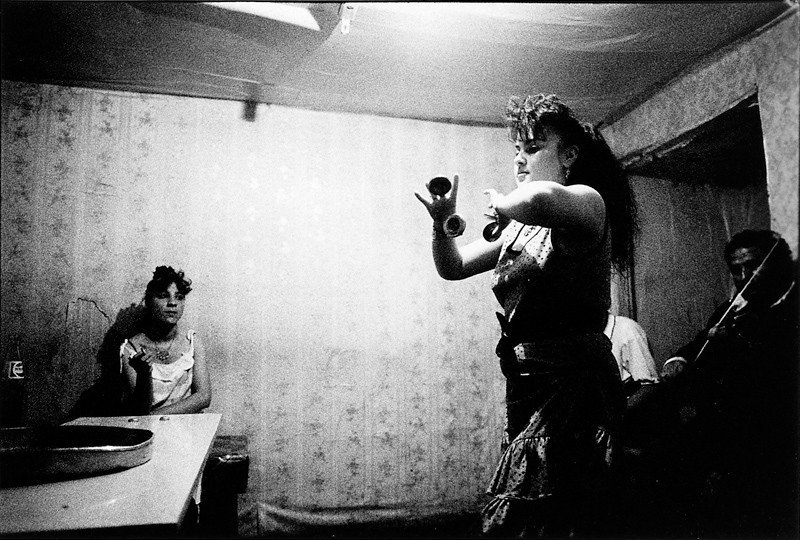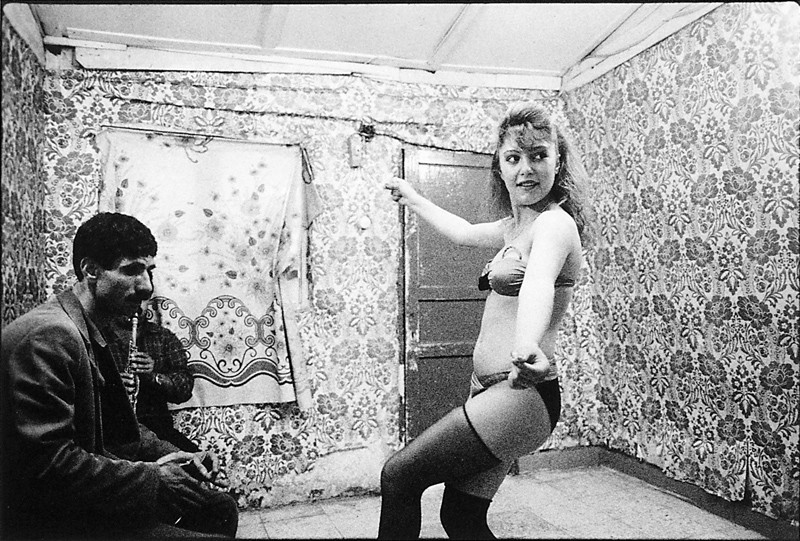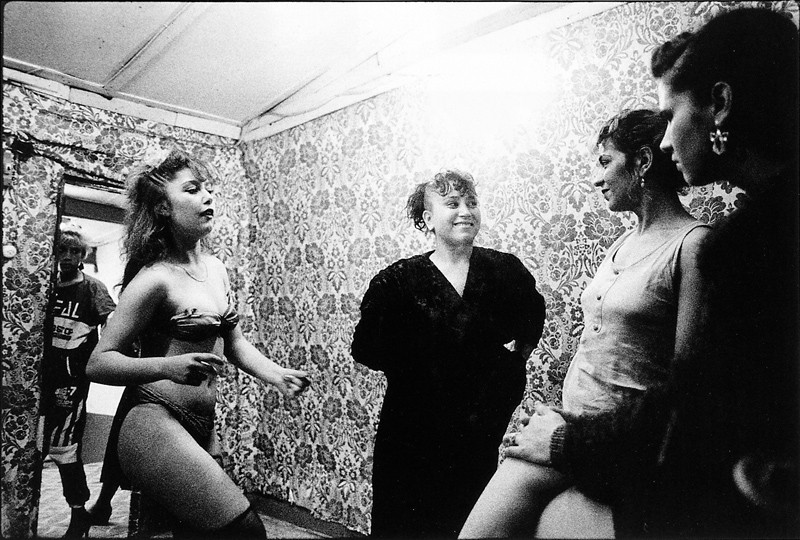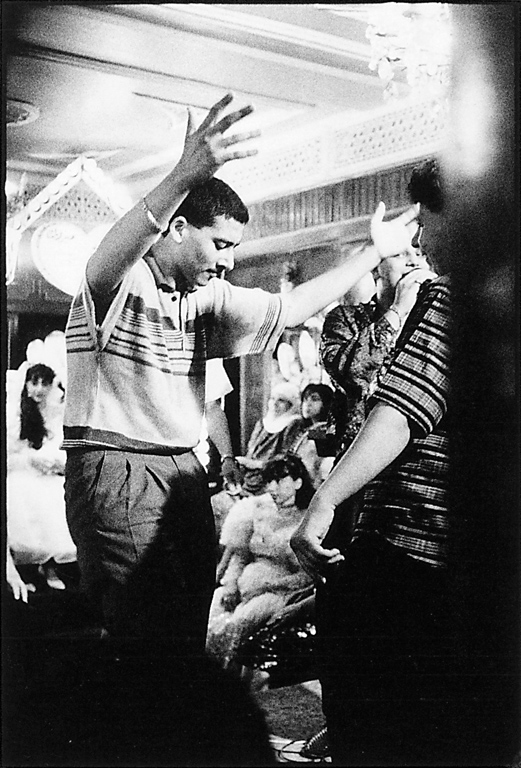[Summer 1995]
by Andrée Martin
Summary
The following text reproduces most of Frances Robson’s artist’s statement, which gives readers an over-all view of Robson’s approach to her work.
R. L.
These photographs were made during the summers of 1989 and 1990… I first became introduced to belly dancing at a family celebration in Oran, Algeria in 1983. There, I danced with an Algerian friend’s sister and nieces in a crowded apartment after a good meal. Later, in 1987, I started “oriental dance” classes in Saskatoon and looked forward to renewing my connection to the vibrant energy and sensuality of the dance form and music I had been so thrilled by. Exercise became an important benefit of the dance for me, as it involves challenging body isolations. Dancing relieved stress and I felt very connected to my body and affirmed in my mind and spirit. At any level of skill, it was fun with many moods and feelings being expressed. Plumpness was attractive and people of all ages could participate. I was interested when I talked with others who used belly dancing to assist women with a history of sexual abuse or incest to feel in touch with their bodies, feeling and pleasure again.
As my involvement with the dance continued, I became curious about the history of the dance form and about its current practice elsewhere. The aspects of the past that fascinated me were theories about belly dancing having origins in ancient matriarchal, goddess-worshipping cultures, where women danced for and among women or to encourage and soothe a woman in childbirth. Based on my reading, I willingly entertained a vision of a time when women’s bodies were celebrated and female sexuality was accepted, cherished and at one with spirituality. In my travels, with my imagination thus fueled, I did glimpse dance poses reminiscent of ancient goddess figurines and I appreciated the symbolism of dancers whose role at weddings emphasized the procreative power of the womb.
… I wasn’t enthusiastic about all the dance situations I came across. Some were, to me, clearly exploitive of women and probably a front for prostitution as well. I saw this as a patriarchal inversion of the dance’s original power. While disturbing and sad, I did record these venues, too, because I wanted to acknowledge an awareness of the variety of current practices of the dance. Simultaneously, I felt enriched by the joy and cultural sharing of the happier dance situations. Within this exhibition, I present these photographs as personal mementoes of my fascination with and impassioned pursuit of bellydancing.










